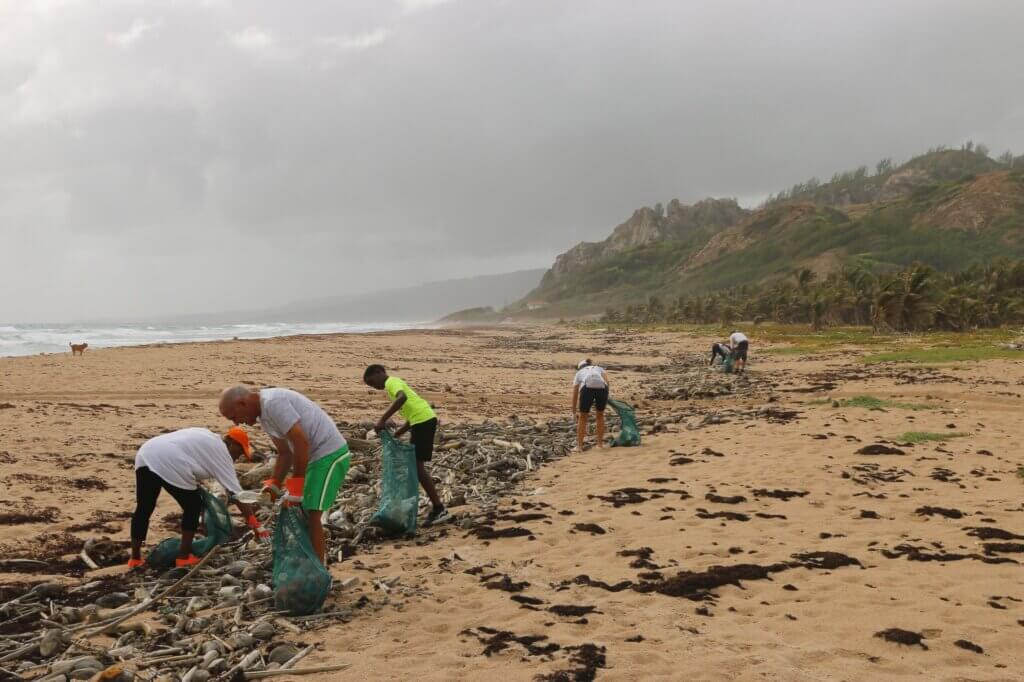*This post contains affiliate links. By clicking on these links and making a purchase you are helping to support this blog.
As travelers we get to see some of the best of the world bringing about a sense of responsibility and a deep respect for the world we live in. We want to be better, to be a part of the solution. To shuttle in an era of more sustainable travel, finding alternatives to air travel and choosing tour operators that follow sustainable practices.
We also get to see the negative impacts of travel, from the immense amount of human waste and garbage at Everest Base Camp to the deforestation of the life-giving rainforests. As global temperatures continue to soar we need to take a hard look at our own environmental impact, while helping places create economic growth for the local people in a sustainable way.
But how can we be a part of the solution, you might be wondering. If you are trying to find ways to put sustainability into practice and have a positive impact while still experiencing the wonders of the world, this post will help you get started.
Choose sustainable destinations
Some places are doing a better job than others, as I outlined in a previous post. When choosing where to visit, take a hard look at their policies and their environmental initiatives. Do they promote sustainable travel? Are they using renewable energy?
Countries like Costa Rica are aiming to become carbon zero countries, promoting sustainability and promoting local growth.
Bring ecofriendly travel items
It’s not just about bringing ecofriendly travel items but traveling lighter in general. Below are a couple of suggestions to help you pack sustainably, minimizing your environmental footprint.
Bamboo is a sustainable resource and these toothbrushes are completely biodegradable, no more plastic
It can take time to adjust your hair to these bars and some research on which is best for you and your hair type, but it removes the plastic bottles and 2oz liquid limit on the plane. And, if you source it right, sustainably sourced ingredients.
Bring a reusable bag for buying local foods
Shopping locally will be discussed more below, but mesh bags are great for a lot of things. If you are camping and hiking, having mesh bags can be used for both dirty laundry or collecting wild mushrooms. In town, they can replace plastic bags when shopping for local produce.
Take a biking or walking tour
Honestly, this is the best way to see a place. Many places offer bike and walking tours and for the budget conscious some of these are even free. And it allows you to explore some of the more natural areas, where you might spot some amazing wildlife.
By traveling on foot or by bike your carbon footprint becomes zero compared to the next best thing of taking public transportation or train travel (which is a great way to see the area at a slower pace).
Practice Leave no Trace
I think this is something more people need to think about and keep at the forefront when they travel. Whether you are in the woods or in a city, you can still practice Leave No Trace by using reusable items and properly disposing of trash.
During the COVID crisis, many people sought nature as a way to cope. However, it resulted in environmental damage and a significant increase in trash in local parks. We can be better than this. If you are heading into nature, carry out what you carry in, and be cognizant of the impact you are having on the environment around you.
Avoid those mini toiletries
There was a time when every hotel had those mini toiletries. I’m not going to lie, I took those home with me as often as possible for future use. I was so naïve and wasteful.
Now, some hotels have switched to hand pumped toiletries on the walls of their showers and only provide the bare minimum. This is better but still not perfect. Instead, bring your own ecofriendly products, starting with the items I mentioned above.
We have come a long way in designing sustainable and ecofriendly products, take the time to find what works for you. You won’t regret it.
Try a new method of travel
Instead of flying, maybe try train travel, or, go by bike or walk. There is so much to be said for seeing a place on foot. Maybe on your next trip to Ireland, instead of renting a car you rent a bike. There are cycling routes designed to do just that.
But you need to consider what is truly best. If you are carpooling with a group to visit a National Park, this is more environmentally friendly than flying. However, if you are traveling alone to do the same activity, it is surprisingly more environmentally friendly to fly.

Take the time choosing your route. Educate yourself. Don’t be afraid to ask questions and don’t just buy into the first thing that is presented to you. Like I mentioned in the previous example, you automatically think that flying is the worst but when you look at all options, in some instances it is the best solution.
Stay at ecofriendly hotels (look for the signs)
Many hotels are now given a sustainability rating. When deciding where to stay, look for those signs, those sustainability awards. Maybe you stay in a hostel, or if hostels are not for you, and let’s be honest they are not for everyone, find those ratings.
Shop and eat locally
It’s easy to look for creature comforts that remind us of home while we are abroad. First, people need to get past the fact that where they are is not home. We need to be openminded.
One of the best ways to support sustainability, because it’s not all about environmental sustainability and climate change, it’s also about supporting local communities so that they can support their own families. By supporting local it keeps many of these people from engaging in destructive employment just to keep their families fed.

An example of this is supporting local communities on African Safari. By supporting these companies it keeps these workers from engaging in pouching just to support their families.
Give back
One way to help communities stay strong and choose sustainable livelihood is by giving back through volunteering. Help build schools, assist with healthcare needs, do trail maintenance, work with a local wildlife initiative. The options are truly endless.

Below are a few to get you started.
https://www.gviusa.com/volunteer-abroad/wildlife-conservation/
Bring your own reusable water bottle (one that filters as well)
By now this one should be a no-brainer. Many people carry their own water bottle these days. The problem is that some countries do not have safe water to drink and you are forced to drink from plastic water bottles just to have clean water.
Not anymore. Now there are many options to filter water right in your bottle, from CrazyCap, to Stanley water purifiers to LifeStraw. These products all filter out viruses, bacteria, chlorine, and those things that make us sick. So, you can still utilize a reusable water bottle and stay safe at the same time.
Try using a carbon calculator
Ok, I stole this one from the Travel Channel but it’s such a good idea! You can actually calculate how much carbon you are using on any given trip and then offset that amount through either donation or by volunteering. It’s kinda cool!
Check out this one from the Nature Conservancy.
Concluding Thoughts
There are so many ways to travel sustainably you just have to be open to implementing them. It’s not always the easy thing to do, I mean convenience items became just that, convenient, because they are easy and single use. But just because it’s easy doesn’t mean it’s the best choice.
Remember, ask questions and stop to take the time to truly think about your actions. Even the smallest steps can make a big difference. Leave this place better than you found it and you will have made a difference.





